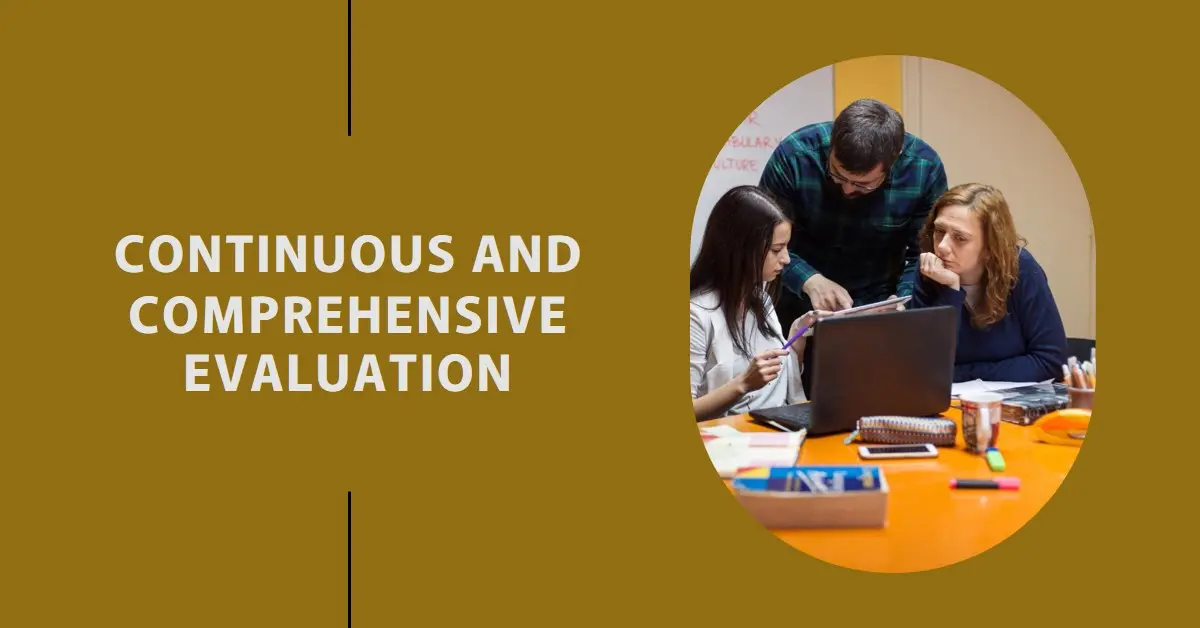Traditional education systems often relied heavily on summative assessments – high-stakes exams at the end of a term or semester. While these exams hold value, they can paint an incomplete picture of a student’s learning journey. This is where Continuous and Comprehensive Evaluation (CCE) steps in.
What is CCE?
CCE is a holistic approach to student assessment that goes beyond just testing their knowledge retention. It involves ongoing evaluation throughout the academic year, encompassing various aspects of a student’s development. This includes:
- Scholastic areas: Subject knowledge, understanding of concepts, problem-solving skills
- Co-scholastic areas: Life skills, creativity, work ethic, communication skills, participation in activities
Need and Importance of CCE
Traditional exams often focus on rote memorization, creating a stressful environment for students. CCE offers a multi-faceted approach with several advantages:
- Provides a more comprehensive picture: CCE considers various factors affecting learning, creating a well-rounded understanding of a student’s strengths and weaknesses.
- Reduces exam pressure: By spreading assessments throughout the year, CCE alleviates pressure from high-stakes exams, allowing students to learn and improve at their own pace.
- Identifies learning difficulties early: Ongoing evaluation helps teachers detect learning difficulties early on. This allows for timely intervention and support for struggling students.
- Encourages personalized learning: By identifying individual needs, CCE paves the way for personalized learning plans that cater to each student’s strengths and weaknesses.
- Improves teaching methods: CCE data helps teachers assess the effectiveness of their teaching methods. They can adapt their strategies based on student performance, leading to a more engaging and effective learning environment.
- Promotes self-assessment: CCE encourages students to reflect on their learning and identify areas for improvement, fostering a sense of ownership over their education.
- Develops life skills: CCE goes beyond academics, assessing co-scholastic areas like communication, teamwork, and problem-solving, which are crucial life skills.
Factors Affecting Learning and How CCE Helps Address Them
Several factors can influence a student’s learning process. CCE helps address these factors by providing a more nuanced view of student progress:
- Learning styles: Students learn differently. CCE incorporates diverse assessment methods like presentations, projects, and portfolios, catering to various learning styles.
- Motivation: CCE’s focus on continuous feedback and improvement fosters intrinsic motivation by recognizing effort and progress.
- Learning environment: CCE data can help identify environmental factors affecting learning. This allows teachers and administrators to create a more conducive learning environment for all students.
- Individual needs: CCE’s personalized approach helps address individual needs. Students who require extra support can receive it promptly.
Implementing CCE Effectively
For CCE to be successful, certain aspects need to be considered:
- Teacher training: Teachers need proper training on conducting CCE assessments and interpreting data effectively.
- Alignment with curriculum: CCE assessments should be aligned with the curriculum learning objectives to ensure consistency.
- Clear communication: Students and parents should be informed about CCE procedures and its role in their learning journey.
- Technology integration: Utilizing educational technology tools can streamline CCE data collection, analysis, and communication.
Conclusion
CCE is a valuable tool for educators, students, and parents. By providing a comprehensive picture of student progress, CCE fosters a more holistic learning environment that promotes deeper understanding, reduces exam stress, and equips students with the skills they need to succeed in life. As education systems evolve, CCE is poised to play a vital role in shaping a more personalized and effective learning experience for all.
What are the different types of CCE assessments?
CCE assessments can include various methods like quizzes, projects, presentations, portfolios, observations, and peer assessments.
How is student performance graded in CCE?
CCE grading systems often move away from traditional letter grades. They may use descriptive feedback, point systems, or a combination of both, focusing on providing specific areas for improvement.
What are the challenges of implementing CCE?
Challenges can include teacher workload, ensuring uniformity in assessments, and parental understanding of the system. However, with proper training and ongoing communication, these challenges can be addressed.
Enhancing the Power of CCE: Strategies and Benefits
Building upon the foundation laid in the previous section, let’s delve deeper into how educators can leverage CCE’s potential and explore the additional benefits it offers.
Strategies for Effective CCE Implementation
Here are some practical strategies to make CCE a powerful tool in your classroom:
- Variety is Key: Utilize a diverse range of assessment methods that cater to different learning styles and skills. This could involve incorporating group projects, debates, self-reflections, and rubrics alongside traditional quizzes.
- Feedback as a Learning Tool: Move beyond simply awarding grades. Provide constructive and specific feedback that guides students towards improvement. Encourage self-assessment and peer feedback to foster a culture of continuous learning.
- Data-Driven Decisions: Analyze CCE data to identify trends and learning gaps at the individual and class level. Use this data to tailor your teaching methods and address specific needs.
- Technology Integration: Utilize educational technology platforms to manage CCE data, automate grading, and offer students personalized feedback reports. These tools can streamline the process and provide valuable insights.
Beyond Assessment: The Broader Benefits of CCE
CCE’s value extends beyond just evaluation. Here are some additional benefits:
- Increased Student Engagement: CCE fosters a more dynamic learning environment where students are actively involved in the assessment process. This can lead to deeper engagement and a sense of ownership over their learning.
- Improved Parent-Teacher Communication: CCE provides regular feedback on student progress, allowing for more frequent and targeted communication between teachers and parents. This collaboration fosters a supportive learning environment.
- Developing 21st Century Skills: CCE goes beyond rote memorization, assessing life skills like critical thinking, problem-solving, and communication. This prepares students for the ever-evolving demands of the 21st century.
- Promoting a Growth Mindset: CCE focuses on continuous improvement rather than just measuring achievement. This fosters a growth mindset in students, encouraging them to embrace challenges and persevere through difficulties.
Conclusion
CCE is not just an assessment tool; it’s a philosophy that emphasizes continuous learning and growth. By implementing CCE effectively and embracing its broader benefits, educators can create a more engaging and enriching learning experience for all students. Remember, CCE is a journey, not a destination. As educators continuously adapt and refine their approach, CCE will continue to evolve as a powerful force in shaping the future of education.



